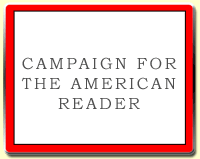 Amanda Brainerd is a New York City real estate broker, wife and mother of three. She graduated from Harvard College and earned a Master of Architecture from Columbia University after being expelled from Choate Rosemary Hall boarding school in the 10th grade.
Amanda Brainerd is a New York City real estate broker, wife and mother of three. She graduated from Harvard College and earned a Master of Architecture from Columbia University after being expelled from Choate Rosemary Hall boarding school in the 10th grade.Age of Consent is her first novel.
At Electric Lit she tagged eight books to take you back to the 1980s, including:
Sag Harbor by Colson WhiteheadRead about another entry on the list.
An intimate portrait of the wealthy Black community in the Hamptons, Whitehead’s coming of age novel is set in 1985 and follows 15-year-old Benji during a summer in Sag Harbor at his moneyed parents’ house. Growing up, I was keenly aware of the racism and anti-Semitism in the Hamptons, which was the New York City version writ large, fueled by money and hidden behind private hedges.
Sag Harbor is among Jeff Somers's top ten books to take you someplace you’ve likely never been.
--Marshal Zeringue








































